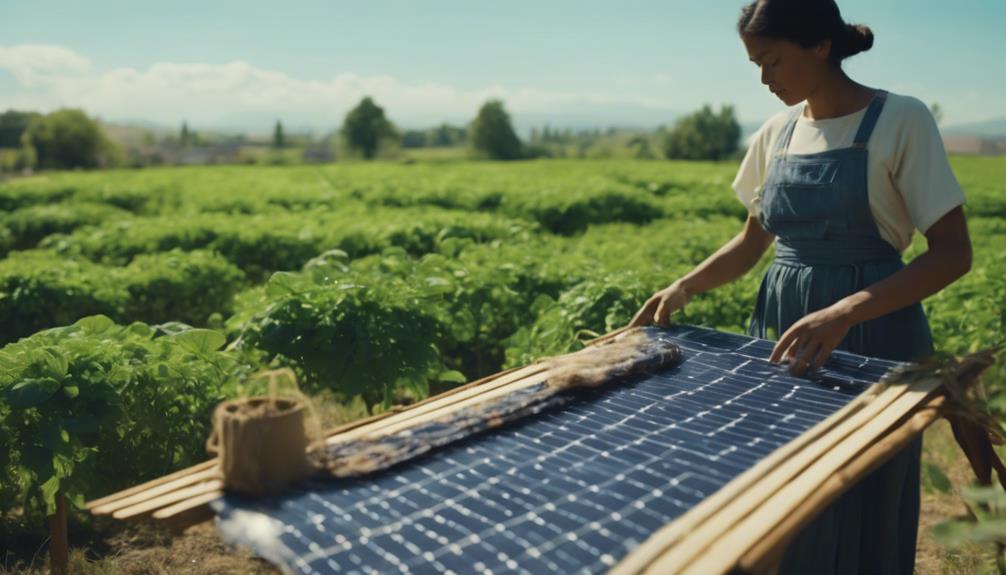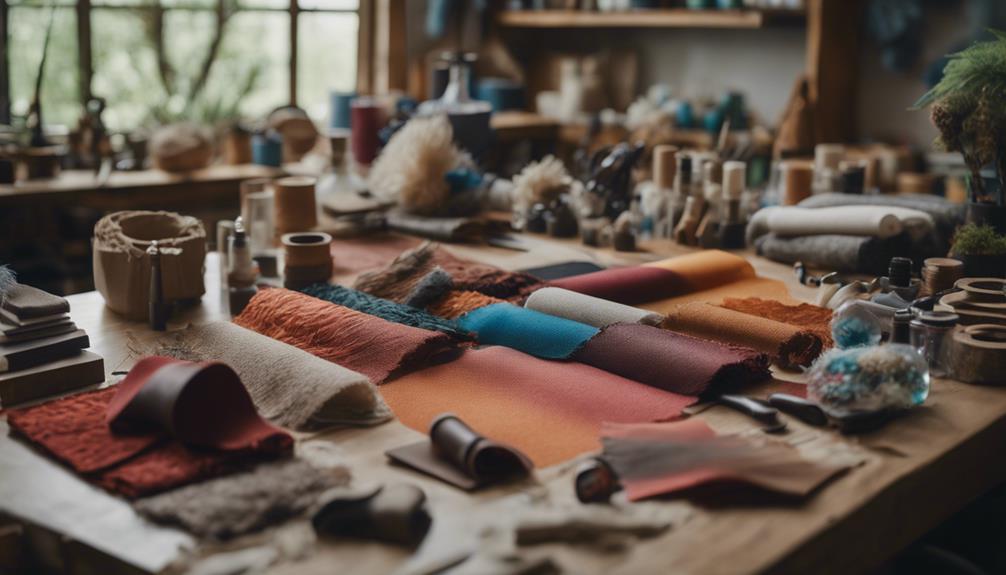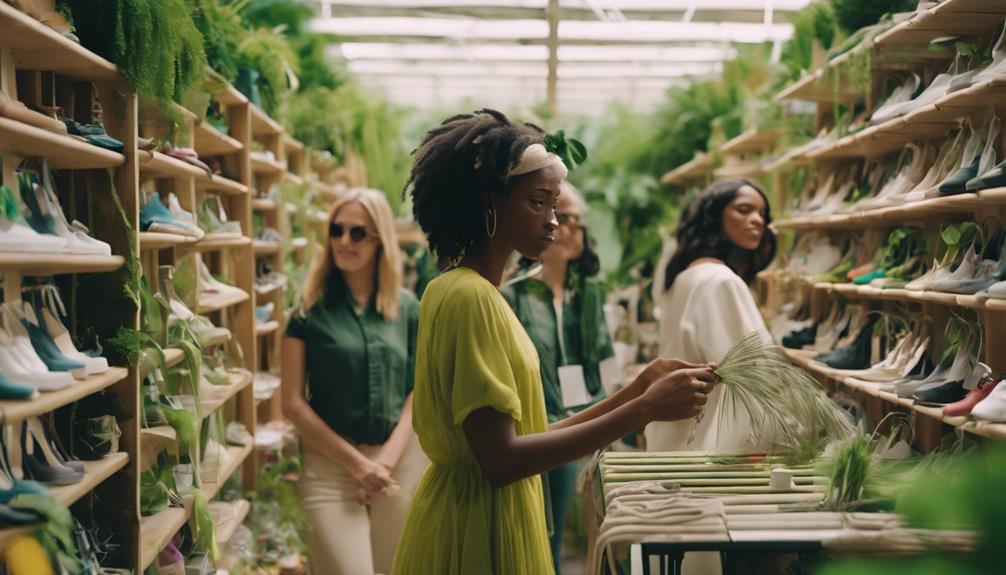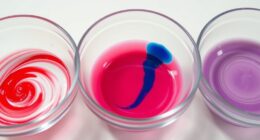Sustainable fashion encompasses a combination of environmentally friendly materials, ethical labor practices, and waste reduction strategies. You can explore pieces made from organic cotton, recycled fabrics, and innovative materials like Piñatex. This approach values quality over quantity, considering clothing as a lasting investment. It also advocates for fair wages and safe working conditions for garment workers, while urging consumers to be conscious of their purchases. Emphasizing waste reduction through recycling and upcycling is essential as well. There is a lot more to uncover that can spark your sustainable fashion journey, so continue to delve into the captivating details that lie ahead!
Key Takeaways
- Sustainable fashion includes the use of eco-friendly materials like organic cotton and recycled fabrics to minimize environmental impact.
- It emphasizes ethical labor practices, ensuring fair wages and safe working conditions for garment workers.
- The movement promotes a circular economy through recycling, upcycling, and initiatives like clothing swaps and take-back programs.
- Sustainable fashion focuses on quality over quantity, encouraging consumers to invest in long-lasting clothing rather than fast fashion.
Definition of Sustainable Fashion
Sustainable fashion refers to clothing production that minimizes environmental harm and promotes ethical practices throughout the supply chain. This approach focuses on reducing the environmental impact of fashion by prioritizing eco-friendly materials like organic cotton and recycled fabrics. By using these materials, you contribute to a system that relies less on virgin resources, helping to conserve the planet's limited assets.
Moreover, sustainable fashion emphasizes quality over quantity. Instead of viewing clothing as disposable trends, you're encouraged to see it as a long-term investment. This shift in perspective not only promotes better consumption habits but also supports the idea of valuing each piece of clothing you own.
Ethical practices are also at the heart of sustainable fashion. This movement advocates for fair wages and safe working conditions for garment workers, ensuring that those who create your clothes are treated with respect and dignity.
Importance of Sustainable Practices

Understanding the importance of sustainable practices in fashion is vital for reducing the industry's significant contribution to global emissions and environmental degradation. By adopting sustainable practices, you help minimize the environmental impact of clothing production, which accounts for up to 10% of global emissions.
When you choose quality over quantity, you contribute to waste reduction, as a staggering 60% of clothing ends up in landfills or incinerators within just a year.
Sustainable fashion isn't just about the environment; it also emphasizes ethical fashion. This approach promotes fair wages and safe working conditions for those in the industry, addressing social inequalities that often go unnoticed.
As consumers, your increasing awareness and demand for sustainable practices push brands to prioritize eco-friendly initiatives. In fact, studies show that 71% of millennials now consider sustainability when shopping.
Environmental Impact of Fashion

When you consider the environmental impact of fashion, it's clear that reducing resource consumption is essential.
You can also play a role in waste management strategies and carbon emission mitigation to help combat this issue.
Resource Consumption Reduction
The fashion industry's excessive resource consumption greatly contributes to environmental degradation, making it vital to adopt practices that minimize this impact. By focusing on sustainable materials and reducing water usage, you can make a notable difference. Here's a quick comparison of the impact various materials have on resource consumption:
| Material Type | Water Usage (liters) | Resource Contribution |
|---|---|---|
| Conventional Cotton | 2,700 | High |
| Organic Cotton | 230 | Low |
| Recycled Polyester | 1,200 | Medium |
| Recycled Cotton | 500 | Medium |
| Synthetic Fibers | 1,900 | High |
Switching to sustainable materials like organic cotton can reduce water usage by up to 91%. Using recycled materials can also greatly decrease the demand for virgin resources, as 97% of clothing production still relies on new materials. With annual resource input for clothing production reaching 98 million tons, it's clear that adopting resource-efficient practices is vital. By choosing sustainable options, you can help mitigate the fashion industry's environmental impact.
Waste Management Strategies
Adopting sustainable materials is just one piece of the puzzle; effective waste management strategies are equally crucial for minimizing the fashion industry's environmental footprint. The fashion sector generates nearly 20% of the world's wastewater, and with fast fashion contributing to 64% of 32 billion garments ending up in landfills, the urgency for sustainable waste practices can't be overstated.
Implementing robust recycling initiatives can drastically reduce this waste, especially since less than 1% of clothing materials are currently recycled, costing the industry around $100 billion each year. By focusing on waste management, you can help extend the lifespan of garments. For instance, just extending the life of clothing by nine months can reduce environmental impact by 30%.
Sustainable fashion practices, like upcycling and take-back programs, are essential in diverting textile waste from landfills. These initiatives not only promote a circular economy but also encourage responsible consumption.
Carbon Emission Mitigation
Fashion's significant contribution to climate change demands immediate action to mitigate carbon emissions within the industry. You might be surprised to learn that the global fashion sector is responsible for about 10% of annual greenhouse gas emissions. If trends continue, it could consume 26% of the world's carbon budget by 2050.
To combat this, supporting sustainable brands is essential. These brands often utilize eco-friendly products made from organic cotton and recycled materials, which require less energy and water in their production processes, effectively lowering the carbon footprint.
Shifting away from fossil fuel-based materials like polyester to biodegradable options can also make a significant impact. By choosing renewable resources, you help lower carbon emissions tied to textile production.
Another effective strategy is extending the lifespan of your clothing. Just nine extra months can reduce environmental impact by up to 30%. This highlights the importance of mindful consumption in mitigating carbon emissions.
Ethical Labor Standards

Often overlooked, ethical labor standards play an essential role in shaping a more sustainable and just fashion industry. When you choose brands that prioritize these standards, you're supporting fair wages that guarantee workers earn a living wage reflecting their contributions.
Unlike fast fashion, which often exploits its workforce, sustainable brands commit to providing safe working conditions, protecting workers' rights, and reducing the risk of accidents.
Transparency in supply chains is another significant aspect. By supporting brands that allow you to trace the origins of your clothing, you gain insight into the conditions under which your garments were produced. This transparency helps you make informed decisions and fosters accountability among manufacturers.
Sustainable fashion brands often collaborate with certified factories, assuring compliance with international labor laws and standards. This collaboration not only promotes safe working environments but also addresses issues like modern slavery and child labor, advocating for social equity and justice in the garment industry.
Resource Conservation Techniques

When it comes to resource conservation in fashion, recycling and upcycling can make a huge difference in reducing waste.
You'll also want to contemplate sustainable material sourcing and effective water conservation methods to minimize your environmental impact.
Recycling and Upcycling Practices
Recycling and upcycling practices play an essential role in reducing the staggering amount of waste generated by the fashion industry. With less than 1% of clothing materials currently being recycled, it's imperative to adopt these sustainable methods. Upcycling can extend the lifespan of your garments, minimizing the environmental impact by up to 30% if you keep items in use just nine additional months.
Here's a quick comparison of recycling and upcycling:
| Practice | Description | Environmental Impact |
|---|---|---|
| Recycling | Reprocessing old textiles into new fibers | Reduces landfill waste considerably |
| Upcycling | Transforming discarded items into new products | Encourages creativity and reduces waste |
| Innovative Programs | Initiatives that repurpose garments | Promotes resource conservation |
| Consumer Involvement | Engaging consumers in recycling efforts | Fosters community awareness |
| Waste Reduction | Decreasing the amount of clothing waste | Helps combat rising fashion waste |
Innovative recycling programs are emerging, encouraging you to repurpose old garments and keep materials out of landfills. As fashion waste is expected to rise to 148 million tons by 2030, your participation in recycling and upcycling can truly make a difference.
Sustainable Material Sourcing
Sustainable material sourcing focuses on using eco-friendly fibers and reducing water consumption, directly addressing the environmental challenges posed by the fashion industry. Currently, only 3% of clothing production utilizes recycled materials, which highlights a considerable opportunity for growth in recycling efforts.
By increasing the use of recycled fibers, you can help reduce the staggering water usage associated with conventional clothing production. For instance, producing just one T-shirt consumes about 2,700 liters of water, but opting for organic cotton can cut that water usage by up to 91%.
Moreover, materials like ECONYL® demonstrate the tangible benefits of sustainable sourcing. By saving 70,000 barrels of oil and cutting CO2 emissions by 57,100 tons for every 10,000 tons produced, recycled materials like this can markedly lessen the fashion industry's environmental impact.
Additionally, incorporating biodegradable options such as hemp, linen, and TENCEL™ supports a circular economy, minimizing reliance on non-renewable resources.
Water Conservation Methods
Implementing water conservation methods in fashion production can drastically reduce the industry's massive water footprint.
You might be surprised to learn that producing a single conventional cotton T-shirt consumes about 2,700 liters of water! By opting for sustainable fashion practices, like using organic cotton, you can reduce water usage by up to 91%.
Innovative fabrics, such as TENCEL™, utilize a closed-loop process that recycles water and solvents, considerably minimizing water wastage.
When brands commit to water-efficient techniques, they actively lessen their environmental impact and contribute to conserving global freshwater resources.
You can also support brands that utilize rain-fed crops or incorporate recycled fibers into their production processes. These methods not only conserve water but also help reduce the overall strain on our planet's essential resources.
Innovations in Sustainable Materials

Innovative materials are transforming the fashion industry, offering eco-friendly alternatives that reduce waste and environmental impact. You might be surprised by some of the innovations in sustainable materials that are making waves today. Here's a quick look at some exciting options reshaping fashion:
| Material | Key Benefits |
|---|---|
| ECONYL® | Regenerated nylon from ocean waste, saving 70,000 barrels of oil per 10,000 tons produced. |
| Piñatex | Pineapple leather that repurposes agricultural waste, offering a cruelty-free alternative to leather. |
| Lab-grown fabrics | Utilize biotechnology to minimize reliance on virgin resources, greatly cutting environmental impact. |
| Recycled polyester | Made from plastic bottles, using 59% less energy compared to virgin polyester, consequently reducing plastic waste. |
These innovations in sustainable materials not only help conserve resources but also minimize the overall environmental impact of the fashion industry. By choosing brands that incorporate recycled materials and eco-friendly fabrics like TENCEL™, you contribute to a more sustainable future. Embrace these changes, and you'll be part of the solution, making a positive impact on the planet!
Consumer Awareness and Education

Understanding the importance of consumer awareness in fashion can empower you to make choices that positively impact the environment and support ethical practices. When you prioritize sustainable fashion, you're joining a growing movement—71% of millennials now prefer eco-friendly options when shopping. By educating yourself through resources like podcasts and guides on green branding, you can make informed decisions about the environmental effects of your purchases.
Recognizing the lifecycle of clothing is key; it helps you understand that a staggering 60% of garments end up in landfills within a year due to fast fashion habits. Increased awareness also shines a light on ethical labor practices, encouraging you to support brands that offer fair wages and safe working conditions.
Moreover, knowledge sharing within your community can foster collective efforts to reduce fashion waste. With only 15% of consumers currently recycling used clothing, there's a significant opportunity for you to get involved in recycling initiatives.
Community Engagement in Fashion

Engaging in community-driven fashion initiatives not only fosters connections among participants but also promotes a collective commitment to sustainable practices. By participating in activities like clothing swaps, you actively reduce individual consumption and encourage a culture of sharing. Local events raise awareness about fashion waste, allowing you to learn about the environmental impact of your clothing choices while building relationships with like-minded individuals.
Here's a quick overview of effective community engagement initiatives in fashion:
| Initiative | Description | Impact on Community |
|---|---|---|
| Clothing Swaps | Exchange garments with others | Reduces waste, builds connection |
| Clothing Libraries | Access a variety of clothes without ownership | Lowers consumption, promotes sharing |
| Awareness Events | Educate on fashion waste and sustainability | Increases community involvement, fosters responsibility |
Building networks around these initiatives strengthens support systems for eco-friendly practices. By engaging in community-based sustainable fashion efforts, you cultivate shared values and a sense of responsibility, ultimately contributing to a more sustainable future.
Future Trends in Sustainability

As communities rally around sustainable practices, the future of fashion is increasingly shaped by trends that prioritize sustainability and ethical consumption. You'll notice several key shifts that are set to transform the industry.
- Circular Fashion Models: Expect a rise in reuse and recycling initiatives, focusing on minimizing waste and maximizing resource efficiency. Brands are embracing closed-loop systems that extend the lifecycle of garments.
- Eco-Friendly Alternatives: Innovations in materials, such as lab-grown fabrics and plant-based textiles, are revolutionizing the industry. These alternatives offer sustainable choices without compromising style or quality.
- Transparency in Supply Chains: More brands are committing to transparency, giving you insights into their sourcing and production methods. This clarity allows you to make informed decisions about the brands you support.
These trends reflect a collective push towards sustainable practices, and as a consumer, you play a crucial role in driving this change.
By choosing brands that align with these values, you contribute to a fashion industry that respects the planet and its people.
Embrace these trends, and you'll be at the forefront of a more sustainable future.
Frequently Asked Questions
What Does Sustainable Fashion Mean to You?
Sustainable fashion means making conscious choices about what you wear. It's about valuing quality over quantity, supporting ethical brands, and reducing waste, ensuring your wardrobe reflects your commitment to the environment and fair labor practices.
What Is Sustainable Fashion and Why Is It Important?
Think of sustainable fashion as a refreshing change in a smog-filled city. It's essential because it reduces waste, lowers emissions, and champions ethical practices, ensuring you support a healthier planet and fair labor.
How Do People Feel About Sustainable Fashion?
You'll find that most people feel positively about sustainable fashion, especially millennials. They value eco-conscious choices and are increasingly aware of fashion's environmental impact, though some still hesitate to pay more for sustainable options.
What Are Some Interesting Facts About Sustainable Fashion?
Imagine a world where your wardrobe contributes to healing the planet. Did you know that extending clothing life by nine months can slash environmental impact by 30%? Sustainable fashion's not just trendy; it's essential for our future!
Conclusion
Incorporating sustainable fashion isn't just a trend; it's a necessity.
Did you know that the fashion industry is responsible for about 10% of global carbon emissions? By embracing eco-friendly practices, you're not only reducing your carbon footprint but also supporting ethical labor standards and resource conservation.
Each conscious choice you make can help reshape the future of fashion. Together, let's champion a world where style and sustainability go hand in hand! We can support sustainable fashion and cruelty-free practices by being mindful of the materials and production processes behind our clothing. By opting for eco-friendly fabrics and supporting ethical brands, we can make a positive impact on the industry. Let’s work towards a future where fashion is not only stylish, but also conscious of its environmental and ethical footprint.









